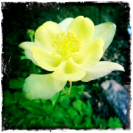ASSAY: A JOURNAL OF NONFICTION STUDIES
2.1
2.1
|
René Magritte’s signature painting “The Treachery of Images” presents a curved tobacco pipe with the inscription “Ceci n’est pas une pipe,” which translates as “This is not a pipe.” Wonderfully witty, the painting acts like a riddle, tricking us into realizing that no piece of art should be equated with what it depicts. This simulacrum of a pipe is simultaneously less real than an actual pipe and more real. Giant and bold, utterly dominant against its taupe background, it seems to be all pipes rolled into one, freighted with their collective symbolism. And how delightful that Magritte allows words into the picture. With one simple sentence he shows that, when it comes to visual art, writing is not out of bounds.
Of course the reverse is true, too. Art can play a significant role in writing, as with ekphrastic poems that explore visual subjects—for instance, Auden’s “Musée des Beaux Arts” or Frank O’Hara’s “Why I Am Not a Painter.” And there are craft lessons to be learned too, especially for essayists, since they, like most visual artists, have had to work under the sign of the real. When Magritte painted his iconic pipe, he was reacting to millennia of viewing assumptions, such as the inclination to view a marble bust or a still-life as a factual replica. The nonfiction writer deals with that same tendency to confuse the essay with its purported subject. Fiction writers are given leeway to imagine, and poets get a dispensation unless writing confessional poems, but essayists must write against the grain of popular thinking, breaking the "equal sign" that readers tend to place between each essay and what it supposedly portrays. Because they are often seen as factual recorders, their perceptive and imaginative abilities are underappreciated. |
|
|
The first voice, as you might have guessed, is that of Jack Kerouac, who writes with a characteristic “flow”—as if every breathless observation is vital and must follow, immediately, uncensored, on the heels of what preceded it. The second voice is that of Octavio Paz, who writes in a more measured, balanced fashion. Unlike Kerouac, who brings “First World” biases to Mexico, placing his foreign assumptions onto people, Paz is an insider who knows his subject intimately. Yet one might argue that he, also, cannot escape the natural tendency to project himself onto his subject, still an outsider of sorts, who superimposes a personal temperament. See how Paz speaks in a carefully parsed fashion that feels almost as courteous and barbed as the Mexican male he is describing. His is a very different voice than Kerouac’s, yet we are drawn to it just as we are to Kerouac’s. And why? Because of that unique perceptive consciousness.
|
What You Imagine is Fair GameIn his 1928 painting “Attempting the Impossible,” Magritte depicts a male artist in a suit and tie painting a life-size nude onto thin air, brushing her skin to life in the closed space of a room. In this way Magritte suggests the possibility that one’s internal life—ideas and emotions—are as real as the objective, physical realm. He suggests that what the artist imagines is as valid as what the artist records.
Certainly, the same can be said for the nonfiction essayist. In fact, we have benefited from a similar freedom of mind since the genre took root, including long-gone essayists like Jonathan Swift, whose 1729 satirical essay “A Modest Proposal” is a wonderful example of a nonfiction writer allowing himself to imagine freely. While living in 18th century Ireland (and serving as the dean of St. Patrick’s Cathedral in Dublin), Swift assumed the posture of a commercial entrepreneur and speculated about the growing herd of Irish children being birthed and orphaned. He allowed himself to think the unthinkable—what if we treated them as a money-making product, slaughtering them for veal or supple leather? And in this disturbing fashion, he forced English readers to realize the systemic cruelty of imperialism. My point is that Swift trusted his mind. What he was thinking was nonfiction too. For that matter, any thought that you are thinking in response to him or in response to what I am now writing, that’s nonfiction, qualifying as an actual occurrence in your life, which means it would not be off limits if you were writing this essay instead of me. The story of the mind—as the essayist Patricia Foster stresses—this is just as important as the story of the body. The mind is the seat of imagination. It is where the “creative” element enters “creative nonfiction.” It is where invention becomes a valid, enlivening part of the personal essay. And for me, Virginia Woolf stands out as a particularly brilliant practitioner when it comes to that internal story. Often in her prose, Woolf allows her imagination to take over from “reality.” For example, in her masterful 1930 essay “Street Haunting,” she describes how we might be drawn one evening to some random item in an antique jeweler’s shop; then she allows herself to be carried off by a line of thought that naturally emerges: Let us choose those pearls, for example, and then imagine how, if we put them on, life would be changed. It becomes instantly between two and three in the morning; the lamps are burning very white in the deserted streets of Mayfair. Only motor-cars are abroad at this hour, and one has a sense of emptiness, of airiness, of secluded gaiety. Wearing pearls, wearing silk, one steps out on to a balcony which overlooks the gardens of sleeping Mayfair. There are a few lights in the bedrooms of great peers returned from Court. Of silk-stockinged footmen, of dowagers who have pressed the hands of statesmen. A cat creeps along the garden wall. Love-making is going on sibilantly seductively in the darker places of the room behind thick green curtains. . . . But what could be more absurd? It is, in fact, on the stroke of six; it is a winter’s evening; we are walking to the Strand to buy a pencil. How, then, are we also on a balcony, wearing pearls in June? |
|
Woolf, who is remarkably attuned to her own mind, allows it into her essay just as Magritte, her contemporary, allowed his mind into his painting, imagining the nude woman into being. Both demonstrate the validity of not only conscious thought but subconscious, inviting the dream, the reverie, the flight of fancy. And, in this fashion, they pave the way for other artists and writers who are continuing, today, to push back against the supposed limits of nonfiction.
|
Sometimes Tone Trumps Idea |
|
We began with Magritte’s not-really-a-pipe, so we come back around to it. By disassociating art from its subject and saying that the painted image is not the thing itself, Magritte helped to open the door for artists, many of them his contemporaries, who discarded the subject altogether—at least in the traditional representational sense that had been der rigueur for western artists over two millennia. New painters felt free to express themselves in less of a “nonfiction” fashion: Kandinsky with his colorful compositions based on music, Jackson Pollock with his thickly-layered drip paintings, Franz Kline with his gestural slashes of black.
In 1929, which is the same year Magritte painted his giant image of a pipe, Arthur Dove made a much-less-representational experiment, contributing to the growing movement of abstract expressionism. Dove, while living on a boat next to Long Island, had decided that he wanted to paint foghorn sounds right onto a misty wet atmosphere. He listened and captured the deep musical tones. He conjured up the soupy sky that called for the horns. And he said later that he simply wanted to create a “sequence of formations rather than to form an arrangement of facts.” Titled “Foghorns,” the piece offers gray undulating stripes, suggestive of waves, and several wonky purple discs of sound that get darker in concentric circles right down to their black core—like huge blossoms or trumpet bells hovering in the air. What is to keep the essayist from doing the same, going for a certain tone rather than factual accuracy? Certainly, the lyric essay has emerged in the last decade as a sub-genre that explores this tonal approach, and one of its champions is Lia Purpura. In a clever piece that describes the brooding sky of a storm descending on the New Jersey boardwalk, Purpura resists the strong pull of a cliché—gunmetal black—going as far as to quote a gunsmith who had told her he could give her almost any metal coating she would like. Intrigued, she writes: Almost anything I would like . . . As, too, this sky is variously compounded, concussive, concupiscent, and oh could be layered with names transfinitely: it’s the rivery color a silver spoon turns when held in a flame. It’s the color of a well-used plumber’s wrench. A perfectly battered railroad tie. I try on: A burnt-spoon sky. Below a sky where we sat down, under wrench-colored clouds. Before the sky opened and a rain as hard as railroad ties fell. . . . It’s the color of a cataract (which very like “promontory” is not much in use, ever-nailed as both are to the nineteenth century, provenance of the Lake District poets). It’s a kinked intestine-gone-bloodless-pale sky. Translucent, unfeathered, fallen-chick silver. Powdered zinc. Stripped olive pit. Dirty-kid water in a porcelain tub. Colloidal and swirly as milk in tea. |
|
Here, we revel in the language itself, in the tone, in the stormy effect of the words layered up and thrown at us, wet and dark and swirling. We stand in the middle of the maelstrom, full of semantic delight. And that is all we need. When reading some pieces of creative nonfiction, an evocative linguistic experience is enough.
|
Click here to download a printable PDF with Works Cited.
|
Tim Bascom’s newest book, the memoir Running to the Fire (University of Iowa Press, 2015), is about his missionary family leaving a small town in Kansas to return to Ethiopia during a Marxist revolution. It follows on the heels of an earlier memoir, Chameleon Days: An American Boyhood in Ethiopia, which won the Bakeless Prize in Nonfiction from Breadloaf Writers Conference. Bascom has published a novel and collection of essays as well, and his essays have won Editor’s Prizes from The Missouri Review and Florida Review, being selected for Best American Travel Writing and Best Creative Nonfiction. He completed his MFA at the University of Iowa and now teaches at Waldorf College in Forest City, Iowa.
|
Related Works
|
Diana Wilson
Laces in the Corset: Structures of Poetry and Prose that Bind the Lyric Essay 1.2 Articles |

